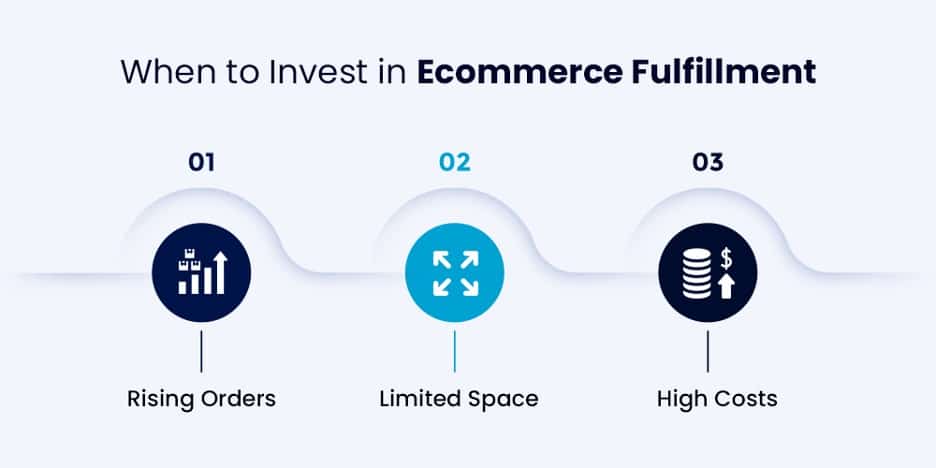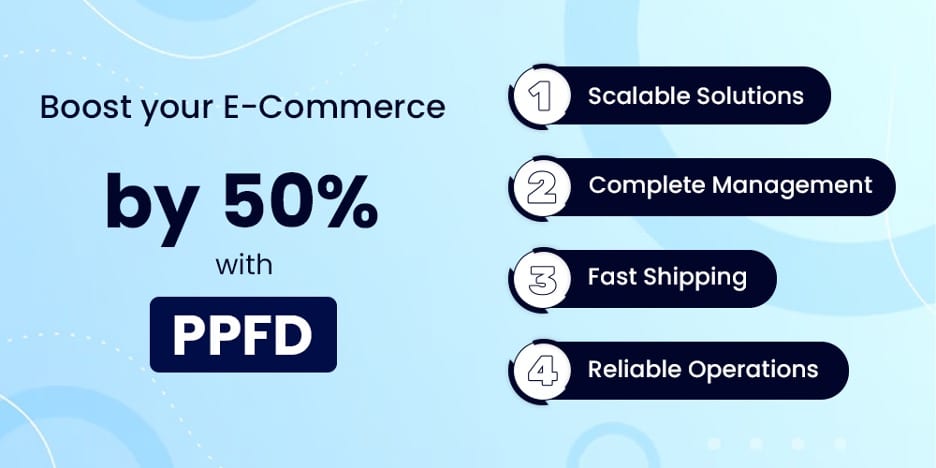
Before ordering any product, most people expect their order to be shipped promptly and packaged properly. Many even consider the convenience of the fulfillment process before completing their purchase. This convenience is one of the main reasons people increasingly choose to shop online rather than in-store.
To manage product storage, packaging, and shipping, you need a reliable eCommerce fulfillment strategy. Some businesses handle order fulfillment in-house, while others rely on fulfillment partners to manage inventory, packaging, and deliveries.
In this guide, you will learn the essential details about eCommerce fulfillment—from the basics to advanced concepts—and how it plays a crucial role in modern eCommerce operations.
In simple terms, the eCommerce fulfillment process involves picking, packing, and shipping online orders to customers. This includes everything from managing warehouses to product packaging and logistics. Fulfillment companies like PPFDprovide invaluable support to businesses by handling these backend operations, allowing businesses to focus on sales and customer satisfaction.
PPFD processes orders for multiple online stores and operates fulfillment centers, warehouses, and transport hubs in different locations to ensure faster delivery times and a smoother order experience for customers.
In today’s highly competitive market, using the right fulfillment service can benefit your business in several ways:

By partnering with a professional eCommerce fulfillment service provider, you can build trust with your customers and keep them satisfied with reliable, damage-free deliveries.
If your primary goal is to deliver products efficiently to customers, fulfillment becomes a vital process. You can choose to handle fulfillment yourself or partner with experts. But how do you know when it’s time to invest in third-party fulfillment services?
Here are some key signs:
Donec condimentum sed orci vel aliquet. Nam venenatis nisi ut urna condimentum, non facilisis orci molestie. Curabitur vel sodales felis. Nam in purus elit. Morbi nisl leo, sagittis interdum malesuada eu, tempor at turpis. Aenean ac mauris eget magna sodales blandit. Aenean mattis id dui a mollis.
Nunc ultrices porta dui nec vehicula. Nullam commodo vel eros eu efficitur. Pellentesque ullamcorper mauris eget sollicitudin tempus. Phasellus pulvinar, elit sed ullamcorper accumsan, lectus tortor tempor leo, ac tincidunt augue tortor eget enim.

Partnering with an eCommerce fulfillment provider can save your business from facing challenges that might otherwise increase costs and impact customer satisfaction.
As your business grows, you may need to adopt a fulfillment model that suits your evolving needs. Here are several common fulfillment models:
For smaller businesses, storing and shipping orders directly from your location can be a cost-effective solution. However, this model has limitations, such as restricted storage capacity and increased operational expenses. This model works best if:
As your order volume increases, you may need to expand to a larger warehouse or outsource specific fulfillment tasks.
Third-party fulfillment providers offer comprehensive services, including warehousing, packing, shipping, and returns management. For example, PPFD provides seamless fulfillment solutions to eCommerce sellers, ensuring fast delivery and enhanced customer satisfaction.
This model involves managing orders across multiple sales channels, such as your website, social media platforms, and third-party marketplaces. PPFD’s multi-channel fulfillment solutions help businesses streamline operations without the need for separate systems for each channel.

PPFD offers tailored and scalable fulfillment solutions that cater to businesses of all sizes. This model is ideal for businesses looking to:
Dropshipping allows businesses to outsource the entire supply chain process, from sourcing to delivery. Sellers focus on marketing, while third-party providers handle inventory and logistics. This model is ideal for businesses seeking to reduce overhead and simplify operations.
When choosing the right fulfillment model for your business, keep the following factors in mind:
In today’s competitive market, whether your business is small or large, selecting the right eCommerce fulfillment partner is crucial for success. By partnering with a reliable provider like PPFD, you can streamline operations, enhance customer satisfaction, and focus on growing your business.
If you need further guidance or want a tailored fulfillment solution, don’t hesitate to reach out to PPFD, a trusted name in eCommerce fulfillment.
Share :

For all your fulfillment, logistics and storage needs!
Copyright © 2024 PPFD Ltd.